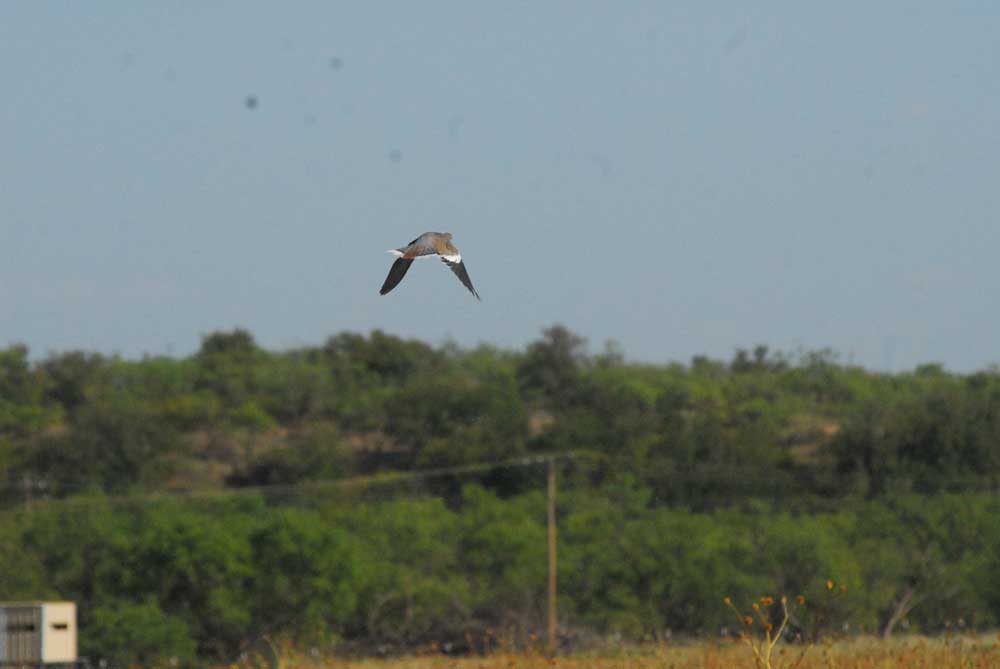Aim Straight: Keeping hunting safe is as important as being successful
Published 2:37 pm Friday, August 26, 2022

- Of all the different types of hunting in Texas, dove hunting is often the most dangerous because of the birds’ erratic flight and hunters moving in and out of another hunter’s field of vision.
If you ever worked at a company that had heavy machinery or dangerous equipment, you probably heard the slogan Safety First.
It should be the mantra for hunting, too.
Trending
Hunting is supposed to be fun, but most of that should come before, between and after the actual hunts themselves. In the field, it should be safety first because there is nothing fun about an accident no matter how minor. And the possibility for accidents exist anytime someone is handling a gun whether at the cabin, getting in the vehicle or the field.
Prior to the beginning of mandatory hunter education in Texas in 1988, accidents and fatalities were high even though hunter numbers were 100,000 to 500,000 lower than today. Annually hunter fatalities would be in the 20s and 30s, with the worst year being 1968 when 37 died. There would be 50, 60 and as many 74 accidents in a year.
In 1987 there were 81 hunting accidents, 12 of which were fatal.
Compare that to last year when there were only 12 accidents, although one was fatal. To make a point, that fatality happened around a vehicle from unsafe gun handling and not in the field.
The turnaround during the mandatory hunter ed period did not happen overnight. In the early years, accident and fatality numbers were still high initially, but as more and more hunters became certified numbers of both dipped. From 1966 through 1987 there were a total of 425 fatalities and 1,724 accidents in Texas. In the last 34 years there have been 154 fatalities and 1,281 total accidents.
Last year none of the accidents involved alcohol or game violations. Both are good news, but not always the case. Annually from 2017 to 2020, game violations were part of 18 to 43% of game violations. On the other hand, only 5 to 12% of the time involved alcohol.
Trending
Oddly, self-inflicted injuries are more common than alcohol related. Of course those should be preventable like the one several years ago when a pig hunter took a restroom break in the field, but failed to uncock the loaded pistol he had put in his pocket. As he was pulling his pants up, the gun went off and the bullet struck him in the thigh.
With dove season opening Sept. 1, it is important to remember year after year the highest number of accidents occur during dove season, surprisingly followed by pig hunting. It should be noted that the Texas legislature has made it legal for anyone to hunt wild pigs without a license or hunter education certification.
Because of the style of hunting, dove hunting is inherently dangerous. Hunters are scattered around a field shooting at a bird with an unpredictable flight pattern. They can zip between hunter stations and dive low leaving a hunter accidently aiming toward others in a split second. That happens in quail hunting as well, but there most hunters are wearing hunter orange, which is a mental stop sign. In dove hunting, hunters are in camouflage and their position does not stand out, and they are constantly changing positions depending on the birds’ flight pattern or when retrieving a bird.
Not surprisingly then hunters swinging on game and hunters out of sight or having moved is a big factor in hunting accidents.
Like the now infamous pig hunter, carelessly handling a gun while loading or unloading is also a major factor year after year.
To make hunting safe, every detail counts. That begins with making sure a gun is in good working order. That includes safeties, triggers and that the barrel is clear of obstructions. It also means having the right ammo for the right gun.
Next on the list is to make sure a gun is never loaded until actually hunting. There is no need to carry a loaded gun to and from the field, up and down steps of a blind or usually in a vehicle.
If you are hunting deer or other large game where it is safe to shoot from the vehicle, make sure the gun is unloaded or at the very least the bolt or action is open to prevent the gun from accidentally going off.
When dove hunting, start the hunt by noting where other hunters are for their safety and yours. Remember dove loads from a 12-gauge shotgun can travel about 200 yards, and while it may not penetrate skin at that distance it can still hurt and cause eye damage.
With more bird hunting happening near or within a city, it is also important to think about houses and traffic, and set up where they are not a factor.
When hunting with a rifle, make sure there is a backstop behind the target to stop the bullet.
And at any time do not be afraid to speak up if someone around you is not being safe with a gun. You might not get a second chance.
One other thing to remember is the importance of hunter education courses. During the mandatory-era, 1.35 million hunters have been certified. There were 1.24 million hunters afield last year.




